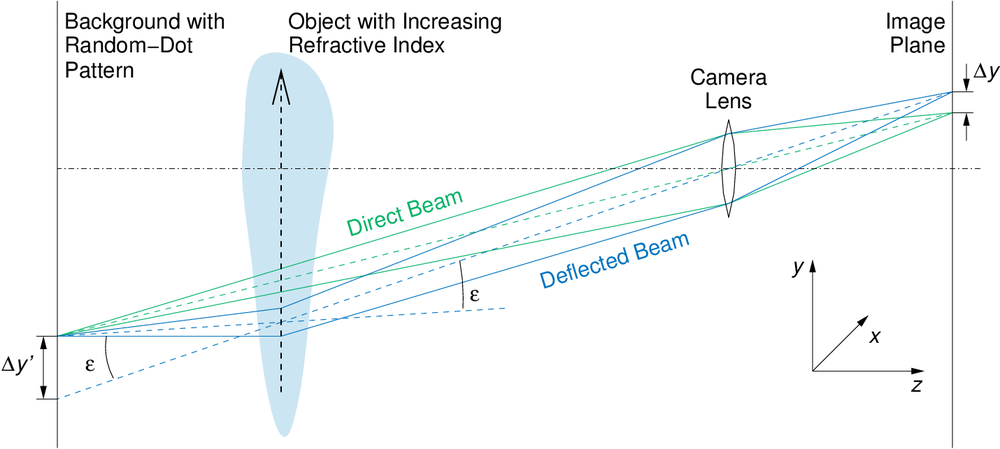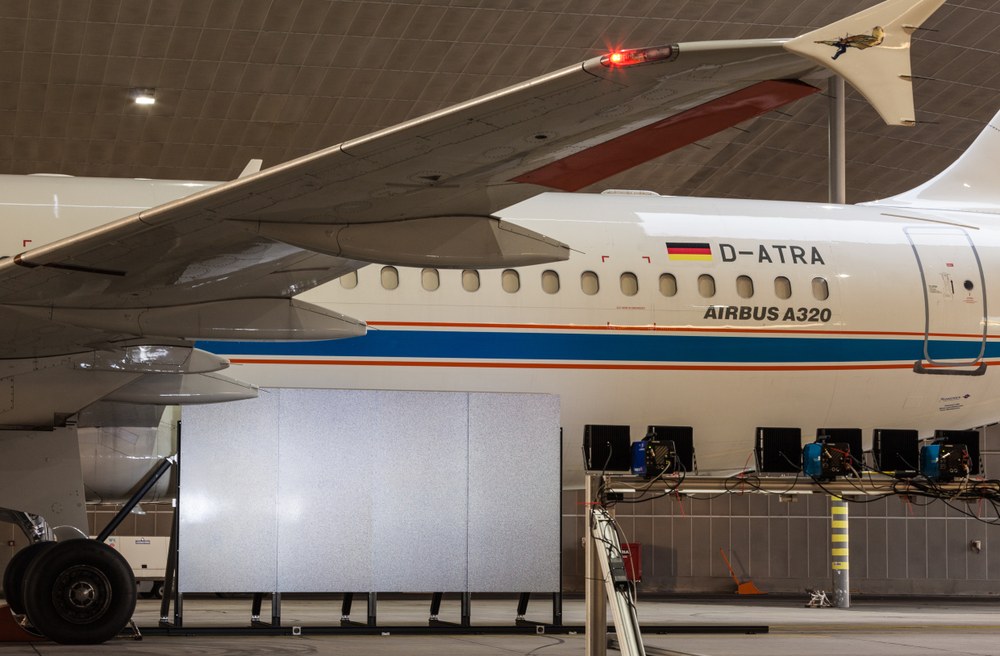Background Oriented Schlieren Method (BOS)
The Background Oriented Schlieren Method is a very simple technique to visualize density gradients, that base on the deviation of light rays due to refractive index changes.
The technique can be applied for all kinds of refractive indices. Even very weak density gradients cause refractive indices, which can be detected safely. E.g. the convection of warm air over a human hand in a normal temperatured room can be visualized as well as it is possible to determine the tenth of a percent of a Helium plume in air


Refractive index gradients are present over a burning candle or a hot street in summer time. Looking through this hot and unsteady plume, the background points seems to shake. In fact the inhomogeneous heated and moving air cause a deviation of the light rays, which are reflected by the background, falling through this area into the observer’s eye. Because the background itself is absolutely not moving, the moving of the background points can only come from a different deviation of the light rays into the air.
A non-uniform temperature distribution in the air or a mixture of air and another gas cause locally different densities. The optical property of the gas – the refractive index – is locally changed with the density, too. Knowing the place of deviation, the deviation angle of the light ray can be derived. The deviation angle is directly linked to the optical property of the gas – the refractive index, if the wave length to the light is known.
If furthermore the refractive index into the observed volume of the reference is known, local density values can be derived in the investigated volume by means of the Background Oriented Schlieren Method.

